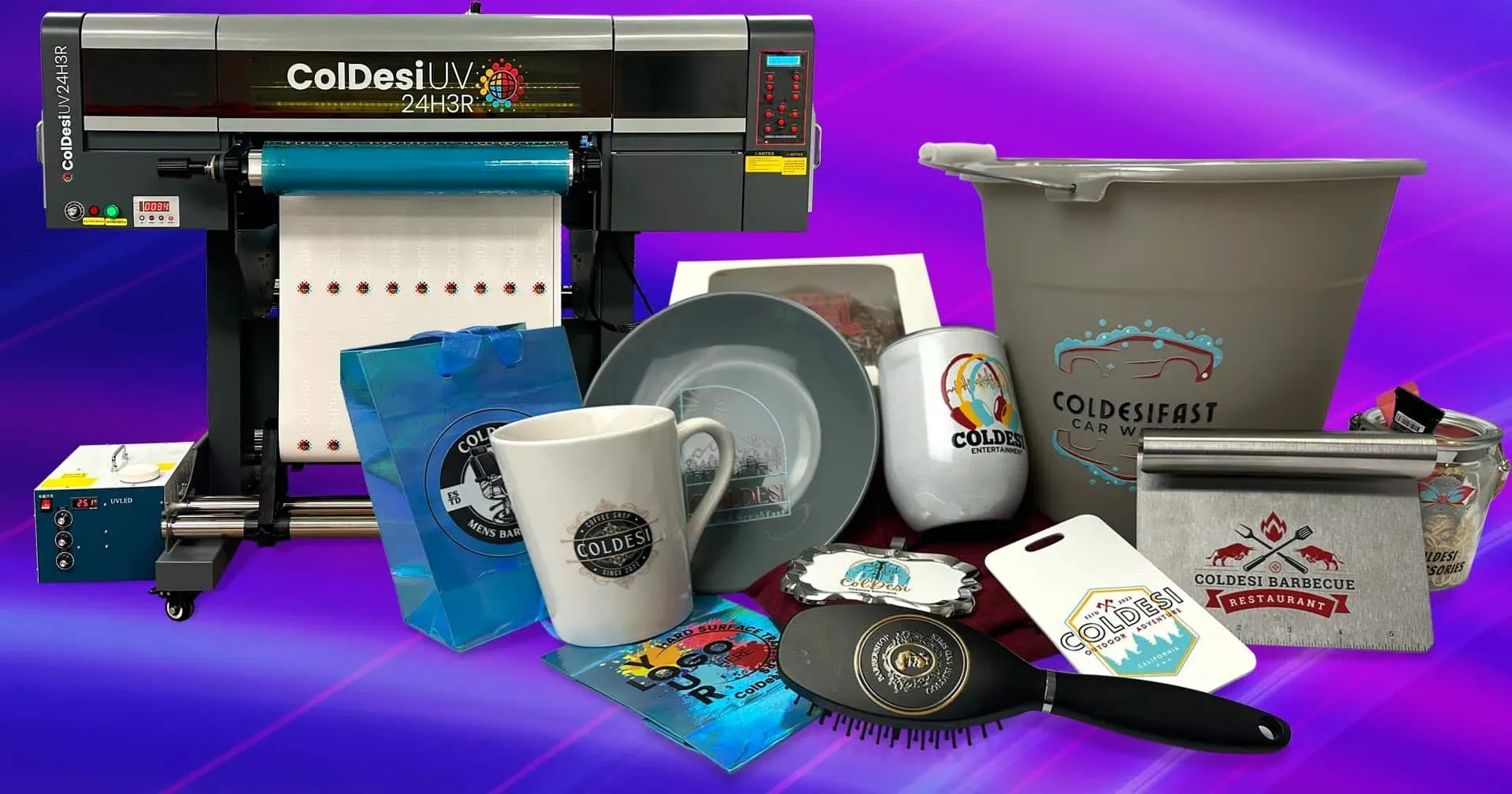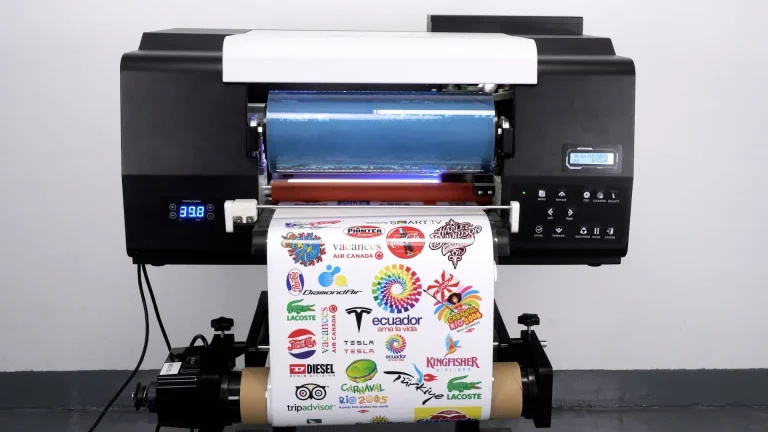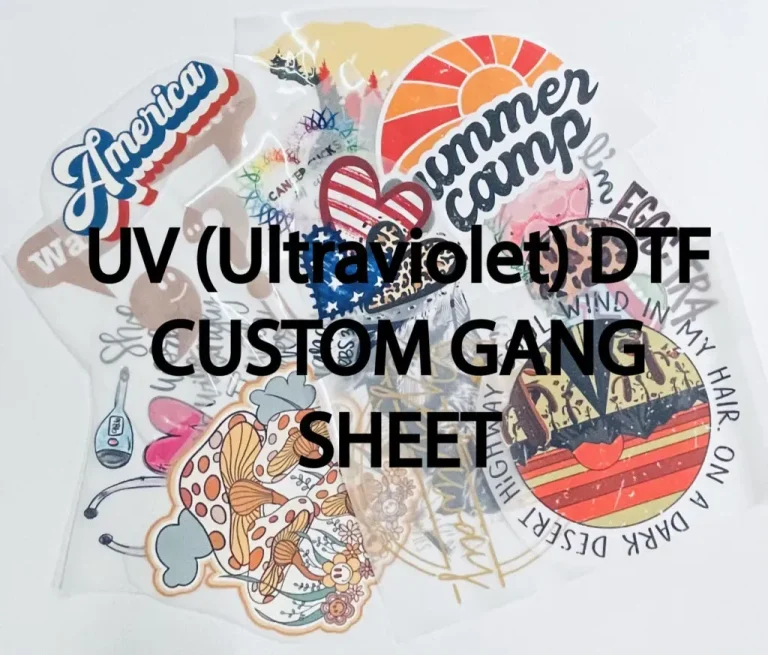UV DTF printing, or UV Direct-to-Film printing, is revolutionizing the world of custom printing techniques with its remarkable efficiency and quality. This cutting-edge UV printing technology utilizes ultraviolet light to cure inks directly onto a film, which can then be seamlessly transferred to a variety of substrates, including textiles and rigid surfaces like metals and plastics. As industries search for sustainable printing solutions, UV DTF stands out for its reduced VOC emissions and eco-friendly ink options, thus appealing to environmentally conscious businesses. With market growth in printing projected to surge, professionals and entrepreneurs alike are keen to adopt this versatile method to enhance their offerings and cater to diverse consumer needs. By leveraging the advantages of UV DTF printing, businesses can confidently enter the competitive landscape with vibrant, durable products that meet modern demands.
When exploring the innovative world of UV DTF technology, it’s essential to understand its various nomenclatures and applications. This method, known as direct-to-film printing with ultraviolet curing, combines effective transfer techniques with the superior qualities of UV inks. By offering an adaptable solution for printing on different materials, including fabric and hard surfaces, this technique caters to a wide array of markets, from apparel to promotional items. As businesses increasingly prioritize sustainable printing solutions, these custom printing methods are poised to become invaluable assets in meeting consumer expectations. With a growing focus on eco-friendly practices, the flexibility and rapid production capabilities of UV DTF printing open new possibilities for creative and ecological advancements in the printing industry.
Understanding the Basics of UV Direct-to-Film Printing
UV Direct-to-Film (DTF) printing is a novel process that fuses the immediate drying capabilities of UV printing technology with the flexible application of DTF techniques. This method utilizes specialized inks cured with ultraviolet light, leading to high-quality transfer images onto various substrates. The capacity to print directly onto films before transferring to objects is a significant game changer, particularly for businesses looking to explore unique design opportunities.
The fundamentals of UV DTF printing revolve around its innovative use of UV light, merging traditional ink application with modern technology’s demands. Prices of printers have come down in recent years, making the entry into UV DTF printing financially feasible for small to medium enterprises, while enhancing the versatility and creativity available for custom prints. As a relatively new addition to the printing arsenal, potential users can expect an exciting and evolving methodology that caters to a wide range of demands.
The Advantages of UV DTF Printing Technology
UV DTF printing offers numerous benefits, making it an attractive option for modern print service providers. One of its most notable advantages is the speed at which it operates. Unlike traditional methods that require multiple time-consuming steps, UV DTF ensures that prints are ready for use almost instantly. The ability to print and cure at the same time translates to increased productivity, catering effectively to businesses that need quick turnaround times.
Moreover, the vibrant color output and sharp detail provided by UV printing technology ensure that each print job meets high standards. Durable and resilient, UV DTF prints are not only visually appealing but also physically robust, with excellent resistance to scratches and fading. This quality makes them ideal for a variety of applications, from promotional materials to high-end branding items, helping brands stand out in a crowded marketplace.
Sustainability in UV DTF Printing Solutions
As environmental concerns continue to shape consumer preferences, UV DTF printing has emerged as a leader in sustainable printing solutions. One of the key benefits of using UV-cured inks is that they typically encompass lower levels of volatile organic compounds (VOCs) compared to traditional solvent inks. This reduced chemical footprint not only promotes safety in production but also aligns with eco-friendly practices that modern consumers demand.
Additionally, many manufacturers are actively seeking to implement sustainable practices in their production processes, including the development of biodegradable or water-based UV inks. Such innovations directly address the growing need for eco-conscious offerings within the printing industry. Companies that prioritize sustainability in their operations can appeal to a broader audience, catering to environmentally aware customers and positioning themselves as leaders in responsible printing.
Application Versatility of UV DTF Printing
The versatility of UV DTF printing is one of its standout features, allowing the technique to be used across various substrates. From textiles to hard surfaces like wood and metal, this printing method excels in adapting to different material properties. Whether for custom apparel production, signage, or promotional merchandise, the capabilities of UV DTF can meet a vast range of creative demands.
This adaptability not only benefits existing businesses looking to diversify their offerings but also opens up new market opportunities. With the ability to print on both rigid and flexible materials, businesses can capture niche segments, providing personalized products that resonate with consumers. From one-off designs to bulk orders, the expansive application potential of UV DTF printing can help businesses stay competitive and innovative.
Market Growth Trends in UV DTF Printing
The UV DTF printing market is experiencing significant growth, driven by an increasing demand for custom printing solutions in various sectors such as fashion, advertising, and product labeling. As businesses seek to enhance their offerings and tailor products to meet consumer preferences, the elegance and efficiency of UV DTF technology present unique advantages that are difficult to overlook.
Industry analysts predict that the shift towards personalized and on-demand printing will continue to propel the growth of UV DTF applications. As manufacturers invest in newer technologies and businesses recognize the potential of UV DTF printing, we can expect to see innovations that further expand the capabilities of this printing method, ensuring that it remains at the forefront of the printing revolution.
Navigating Challenges in UV DTF Printing Setup
While the benefits of UV DTF printing are substantial, it is crucial to understand the potential challenges that come with it. Initial setup costs can be higher due to the specialized machinery and inks required for this technology. Owners looking to invest in UV DTF printing must be prepared for the financial commitment necessary to acquire equipment that meets industry standards.
Furthermore, even though the inks utilized in UV DTF printing are resilient, proper handling and storage are essential to maintain their optimal performance. This means businesses must implement careful management and training practices to ensure quality consistency in printed products. Recognizing and preparing for these challenges can help businesses make informed decisions and fully leverage the advantages of UV DTF technology.
Frequently Asked Questions
What is UV DTF Printing and how does it work?
UV DTF Printing, or UV Direct-to-Film printing, is a cutting-edge printing technique that utilizes ultraviolet light to cure inks directly onto a film. This film is then transferred onto various substrates, offering versatility across different materials like textiles and metals. The simultaneous printing and curing process results in faster production cycles, making UV DTF an efficient solution for various printing needs.
What are the advantages of using UV Printing Technology in DTF processes?
The advantages of UV Printing Technology in DTF processes include vivid and durable prints that resist scratches, chemicals, and fading. Additionally, UV DTF allows for quick turnaround due to its simultaneous printing and curing. This technology also supports a wide range of applications, making it a versatile choice for businesses seeking custom printing techniques.
How does UV DTF Printing contribute to Sustainable Printing Solutions?
UV DTF Printing contributes to Sustainable Printing Solutions by using inks that typically emit lower levels of volatile organic compounds (VOCs) compared to traditional solvent-based inks. Many manufacturers are also focusing on eco-friendly inks, allowing businesses to respond to the growing demand for environmentally conscious printing without sacrificing quality.
What types of products can benefit from UV Direct-to-Film printing?
UV Direct-to-Film printing is highly versatile and can be used for a variety of products, such as custom apparel, promotional items, and rigid surfaces like wood or metal. This ability to print on both flexible and hard materials expands the opportunities for businesses in the competitive printing market.
What is driving the market growth in UV DTF Printing?
The market growth in UV DTF Printing is primarily driven by an increased demand for custom solutions in sectors such as fashion, advertising, and product labeling. Businesses are recognizing UV DTF as a way to cater to diverse consumer needs efficiently, thus positioning themselves favorably in an evolving digital print landscape.
What challenges should businesses consider when adopting UV DTF technology?
When adopting UV DTF technology, businesses should consider the higher initial setup costs due to specialized equipment and the need for optimal storage and handling conditions for durable inks. Being aware of these challenges can help businesses make informed decisions and maximize the benefits of UV DTF Printing.
| Features | Description |
|---|---|
| Speed and Efficiency | Quick production cycles with simultaneous printing and curing, reducing turnaround times. |
| Vivid and Durable Prints | Produces sharp, vibrant prints that are resistant to wear, chemicals, and fading. |
| Sustainability | Lower VOCs compared to traditional inks; focus on eco-friendly inks. |
| Application Diversity | Can be used on various materials including textiles, plastics, and metals. |
| Market Growth | Increased demand across sectors signals significant growth potential. |
Summary
UV DTF Printing is revolutionizing the printing industry with its innovative technique that combines speed, quality, and versatility. By utilizing UV light to cure inks directly onto film, it allows for immediate and durable print solutions across various substrates, including textiles and rigid materials. This technique not only enhances print quality with vivid colors and details but also offers a sustainable printing option minimizing environmental impact. As industries progressively demand custom solutions, UV DTF Printing is poised for significant market growth, offering businesses a competitive edge in a dynamic marketplace.







